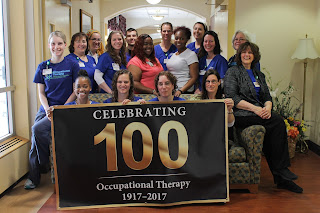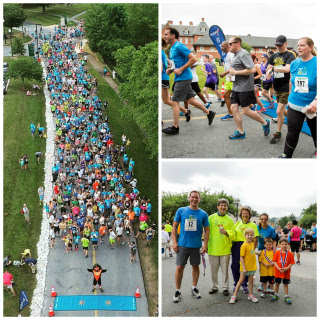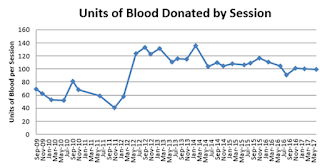 This coming Thursday (June 29), Dr. John Saunders will retire as the chief medical officer (CMO) of the GBMC HealthCare System.
This coming Thursday (June 29), Dr. John Saunders will retire as the chief medical officer (CMO) of the GBMC HealthCare System.John came to GBMC in 1979, as a fellow in head and neck surgery from Walter Reed Army Medical Center, to work with Drs. Robert Chambers and Darrell Jacques. He joined the medical staff and after 10 years in private practice, Dr. Saunders became the medical director of the Milton J. Dance, Jr. Head & Neck Center. Under John’s direction, the Dance Center became the premiere community-based program for head and neck cancer surgery and rehabilitation, and voice disorders.
John retired as an active surgeon in 2012. He served as GBMC's chief of staff from 2004 to 2010 and as interim Chief Executive Officer in 2010.
I was most fortunate when John agreed to take on the role of CMO in 2010 and has served in that capacity until this day. In his role as CMO, John has been responsible for the clinical quality of our healthcare system and has served as the designated institutional official (DIO) at GBMC for the Accreditation Council of Graduate Medical Education, overseeing all of our residency programs and working closely with the Graduate Medical Education Committee.
We all know that John is an icon at GBMC. There is no more respected individual in our system than John Saunders. Patients know John Saunders as a great doctor with an outstanding bedside manner. Clinicians know him as an extremely talented surgeon, who was very calm in the most difficult situations. Residents and medical students knew him as an outstanding teacher who was always kind but firm. Members of the senior team know John for his wisdom, his insightful guidance, his wonderful sense of humor and his outstanding storytelling capabilities.
John and Carolyn Candiello, GBMC’s vice president for Quality and Patient Safety built an excellent structure that is second to none and both have overseen the cultural and performance change that has put GBMC in the quality limelight locally and nationally. John has presented patient stories monthly for seven years. These stories have educated many about the complexities of caring for patients and about a model to make things better.
Everyone knows John for his humility and self-deprecating humor. I have come to know John as an outstanding family man, who along with his wonderful wife, Betsy, have raised three great children and is now helping to raise his grandchildren. John plays the piano and at his retirement event I asked him to play a few numbers but he refused when I told him he had to play at least one Steely Dan song.
All kidding aside, John has become a dear friend and I will miss him on our senior team. I don’t know anyone who can imagine the GBMC HealthCare System without John Saunders. The good news is that John is not leaving us as he has agreed to continue to serve as a director on the GBMC HealthCare Board. Congratulations, John and thank you for everything you have done through the years for GBMC and our patients!
Cause For Celebration
Earlier this month, more than 300 cancer survivors, their caregivers, friends and family members celebrated life at our annual Cancer Survivorship Celebration.
Over the last 26 years, we’ve held this event for GBMC cancer patients and their caregivers as an opportunity for cancer survivors, loved ones and staff to join together, renew acquaintances and celebrate both survivors and their caregivers. It provides us the opportunity to commemorate our patients’ courage and our caregivers' commitment to their treatment. More than 2,000 individuals annually turn to the experts at The Sandra and Malcolm Berman Cancer Institute at GBMC when faced with potentially life-changing medical diagnoses. Our Berman Cancer Institute is not only locally recognized, but nationally as well and is fully accredited by the American College of Surgeons Commission on Cancer.
The number of people who attend this event continues to grow. Congratulations to our survivors, their families, and our caregivers!
 Happy 100th Anniversary!
Happy 100th Anniversary! This year The American Occupational Therapy Association (AOTA) is celebrating its 100th Anniversary.
The AOTA, originally called the National Society for the Promotion of Occupational Therapy, was created in 1917 by a small group of pioneers in the profession.Today, there are more than 213,000 occupational therapy practitioners nationwide that help people of all ages gain or maintain capabilities that help them live life to the fullest.
Our therapists and therapy assistants provide functionally oriented treatment that helps individuals of all ages after an injury, illness or medical procedure. Their work promotes healing, increases strength and endurance and teaches patients how to prevent further pain or injury. Their specialty care can help their patients achieve a higher level of independence.
I want to sincerely thank all the OTs and OTAs for their incredible work and for their unwavering dedication to our patients!
Remember to…
Don’t forget to RSVP for this year’s Employee & Volunteer Appreciation BBQ titled “CAMP GBMC Healthcare.” This year’s event, slated for Wednesday, July 12, will be a great opportunity for our staff and volunteers to come together to celebrate what we have accomplished, while also having some fun! Please join us! You have until Wednesday, July 5 to RSVP and can do so by clicking here. I look forward to seeing you there!
Happy Birthday to Us!
Finally, I want to wish everyone in our GBMC family a safe and happy Independence Day. July 4th marks the birthday of our great country…the land of the free and the home of the brave. Let's take some time to reflect on what we can each do to make our country even better than it is today.





